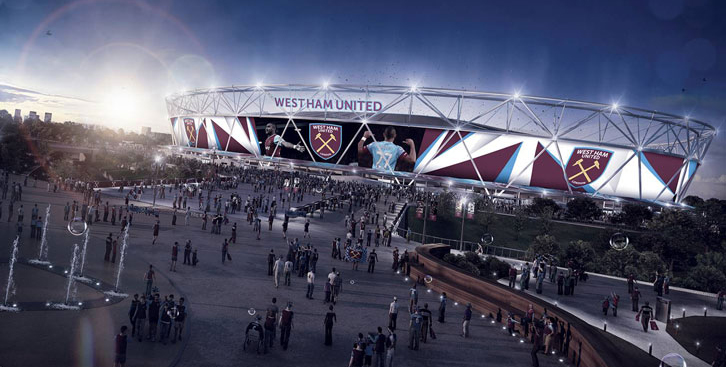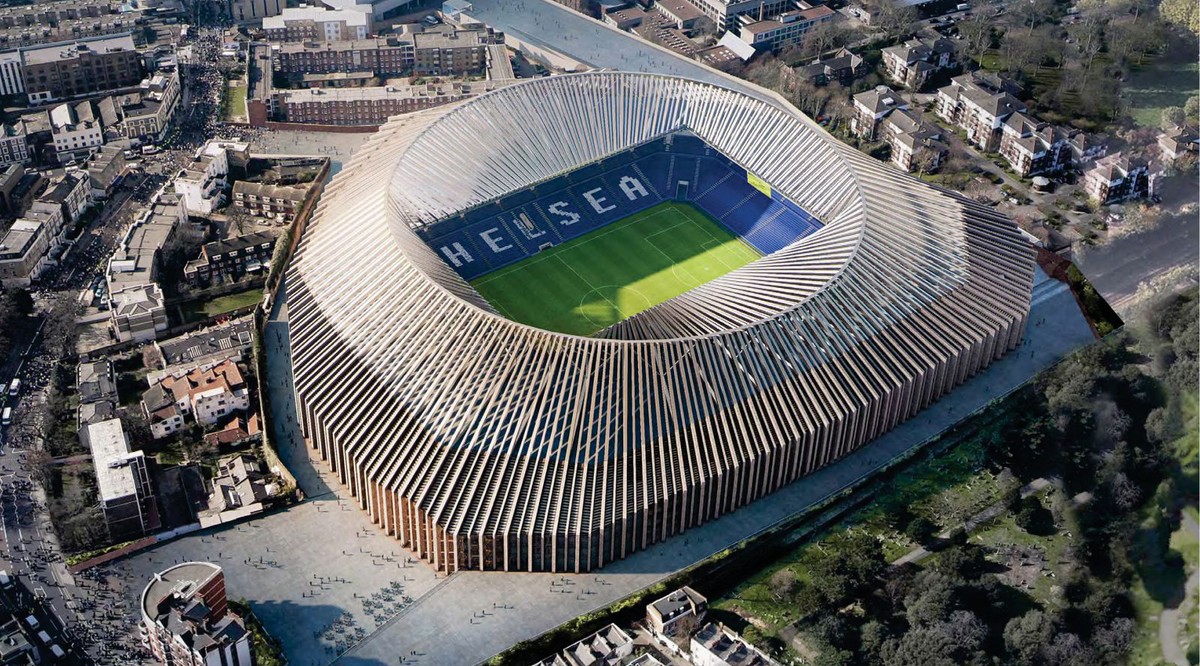The London stadium games bring 100k new seats
source: StadiumDB.com; author: michał
 Only including the top 10 teams of Greater London the increase in stadium capacity is over 100,000 between 2008 and 2018. But while some clubs succeed, others struggle to expand their grounds in the world's most dense football market.
Only including the top 10 teams of Greater London the increase in stadium capacity is over 100,000 between 2008 and 2018. But while some clubs succeed, others struggle to expand their grounds in the world's most dense football market.
Advertisement
London might be the only city which alone could host Euros or even the World Cup. And forget FIFA's rules about a limit on number of stadiums from one host city, after all they have given the 2022 World Cup basically to Doha rather than all of Qatar. In London that would actually make sense as it's the world's most football-mad city by number of stadiums already in use and – largely – requiring expansion.
We decided to compare the situation of top 10 clubs within the London metropolitan area between 2008 and 2018. The selection was based on club status and stadium ambitions, whether they're already running their new projects or only working on such. The result is a stunning increase of 12,000 seats on average for each of the analysed clubs! In 2008 their total stadium capacity was 268,471 people, while in 2018 (including projected growth) that number is 390,279!
Those who made it already
Already in 2008 London had one superb club stadium, the Emirates. Since then it has only decreased in size by roughly 500 seats but has enjoyed near sell-out crowds throughout its operation.
More recently Arsenal have been joined by West Ham, who relocated from the 35,000-seat Boleyn to London Stadium, offering some 60,000 capacity. And, if they win their legal battle against stadium operators, West Ham may see further increase in size.

Those making it happen
It should have been ready by now, but Tottenham are seeing significant issues with their new stadium's delivery. Still, in early 2019 their long-desired 62,062-seat stadium on the site of White Hart Lane (36,200) should be ready. It's still Europe's largest private project, already worth over £1 billion, and will give Spurs a great financial advantage with its unprecedented hospitality options.
Elsewehere in London construction is already well underway in Brentford. Their new community stadium may have been slightly downsized, yet with 17,250 seats it's still a leap from Griffin Poark (12,300). In 2020 the project will be complete.
Those about to begin
Like phoenix from ashes, Wimbledon AFC have returned in style to league football. Now they're also about to return to their spiritual roots at Plough Lane. Enabling works are already ongoing where the new 20,000-seat stadium will be, even if it's only expected to hold 7,000 people upon opening and left for gradual expansion. Beyond comparison with their guest-tenancy at Kingsmeadow (4,850).
Fulham are another major club to be aiming much higher, even if there's very little space for expansion left at Craven Cottage. So they opted to build partly on the Thames waterfront, which should see the stadium grow from 22,000 to nearly 30,000 by 2021. And they're not stopping there, having an outline ready for further expansion behind both goals.
Also already with planning application filed, Crystal Palace hope to improve their profile by a massive new main stand, adding some 7,000 seats to Selhurst Park. And not just any seats – with large percentage of premium seating to add extra revenue.
Those stuck in limbo
Unfortunately building in London isn't an easy job at all, as witnessed by over a decade of efforts by Brentford and Tottenham already. While these clubs have pushed through, others may not be so lucky. In fact, some of the best British bookmakers have accepted bets on whether some major football projects will come true.

Prime example: Chelsea FC. The team's new temple-like Stamford Bridge will be a true landmark when ready. But “when” remains the unknown. Recent diplomatic issues between the UK and Russia forced owner Roman Abramovich out of the country for a while and he then officially put the 60,000-seat project on hold, waiting for “better climate to invest”. Brexit isn't helping, but it's not just about politics alone. The new Stamford Bridge proved more complex than anticipated and there are speculations about it simply being more expensive as well.
Less known QPR are also stuck with their current, extremely constrained Loftus Road. They already tried to relocate to a 40,000-seat stadium at Old Oak and were blocked, now looking into a 30,000-seater much closer, on the site of track and field Linford Christie Stadium. Early stages though, very early.
Plans are far more advanced in Luton (OK, not really London, but tell that to Ryanair, will you?), where the 17,500-seat Power Court stadium scheme is waiting only for the green light to build. And yet there is no green light, the project remains stuck. Most recent news from October suggest there's progress in land acquisition with Luton Town owners now in possession of 100% of the required land.
Advertisement

 StadiumDB
StadiumDB